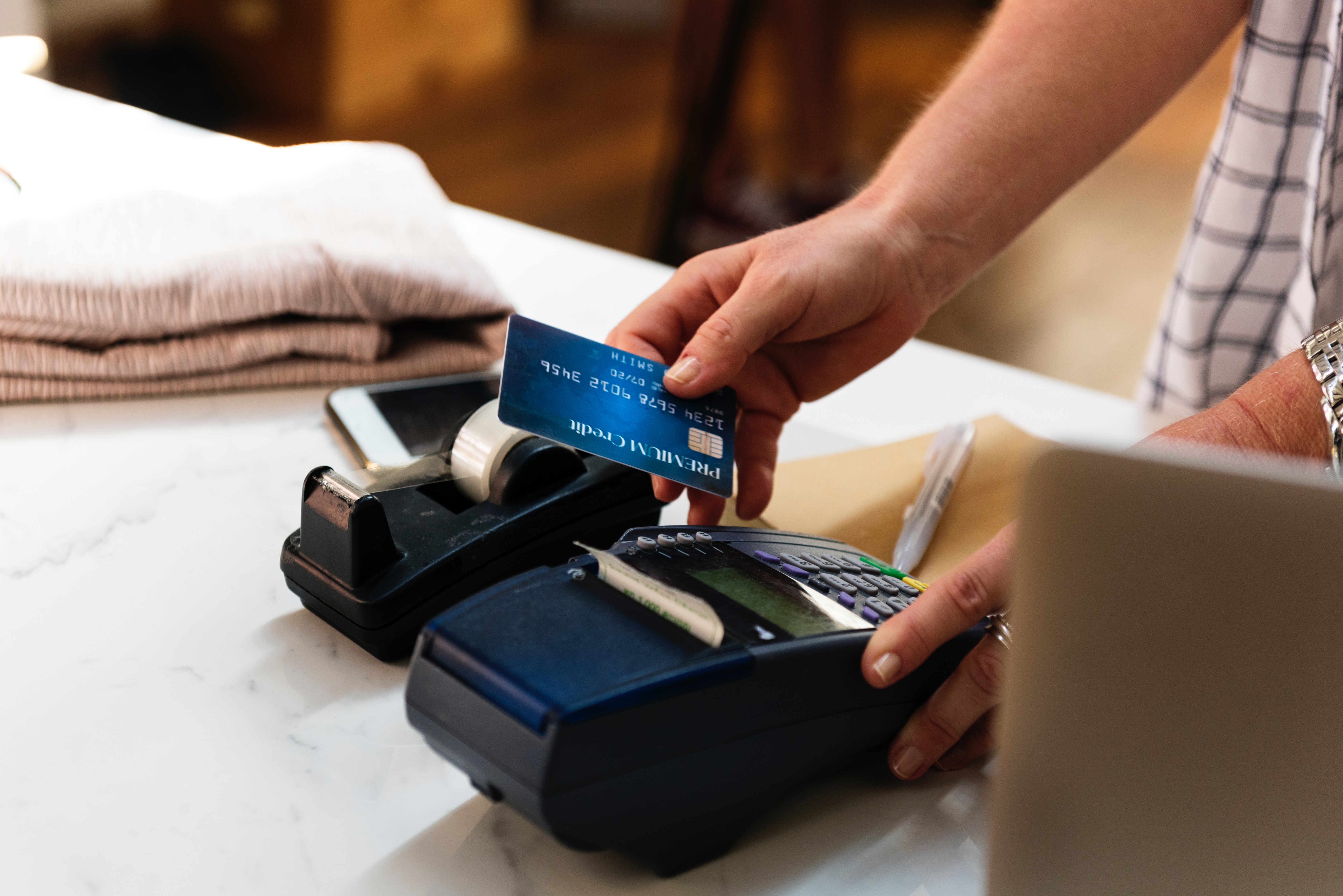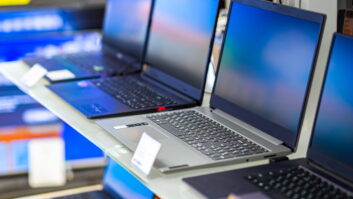
Apple Pay. Samsung Pay. Google Pay. Walmart Pay. Alipay. WhatsApp Pay. Retailers still recovering from the trauma of updating to mandated EMV chip-reading POS terminals are now being pestered to accept an increasing number of mobile and contactless payment systems – including the upcoming Apple Card – their still shiny chip-reading terminals might not be able to accept.
Obviously, payment trends are trending away from cash and mag stripe credit cards and toward more secure and mobile monetary methods. According to a recent report on global payments from McKinsey, in-person use of digital wallets in the U.S. will grow at a 45 percent CAGR to reach nearly $400 billion annually by 2022.
For most retailers, not being able to accept payments via these new-fangled digital wallets isn’t that big a deal. But consumer electronics retailers need to present a technology-forward face. There’s almost an imperative to be as cutting-edge at the front counter as they are on the sales floor.
“It’s important for business owners to pick a solution that allows them to never miss a sale,” opines Thomas Templeton, hardware product lead for Square. “This means accepting all different payment types across all their channels. For in-person payments specifically it’s accepting all major credit cards, chip-enabled cards, gift cards and contactless payments, which include mobile payments like Apple Pay and Google Pay, as well as contactless cards.”
It’s easy to understand CE retailer reticence to once again upgrade their POS equipment and systems. “Retailers don’t want the work or aggravation often associated with upgrading,” notes David Gosman, global hospitality segment manager at HP Inc. “A payment terminal upgrade itself can be as little as a couple hundred dollars, but those costs can increase fast if additional technology in the store needs to be upgraded.”
A bigger issue for retailers is basing their POS upgrade decision – or lack of one – just on what they see and hear – or don’t see and hear – in their stores. “It’s definitely a Catch-22,” observes Robert Eastman, research manager at IDC Retail Insights. “Retailers are waiting for consumers to adopt it, and consumers are waiting until they see widespread acceptance.”
See also: 5 Things Retailers Should Take Away From The Apple Card News
But this Catch-22 logjam might be broken by younger consumers. “In study groups of 25-34 year-olds we conducted, 70 percent wouldn’t consider walking into a small merchant that didn’t accept digital payments,” reports Chris Poelma, VP-GM of NCR’s new Silver One mobile payments system.
“Need more proof?” quips Stephen Horton, senior solution manager at Oracle Retail. “Just ask your babysitter how they would prefer to be paid. Chances are they will say, ‘just Venmo me’. Millennials are by and large more comfortable with newer technologies, such as Apple Pay, Google Pay, etc., and are participating in the same type of transaction as a physical wallet, it’s just that they’re using a different NFC process to do so.”
Reasons To Upgrade
There are plenty of practical reasons why CE retailers should consider updating their POS systems…again. There is the sheer speed and convenience of a digital transaction, the ability to complete a sale via a mobile device rather than at a traditional cash register counter, the increased inherent security and reduced fraud exposure of a digital transaction, along with softer modern digital business advantages that enable CE retailers to more effectively manage and grow their business.
“There’s the ability to enable cross-channel payment,” notes Rivka Gewirtz Little, research director for IDC’s Financial Insights. “Payment in the store and payments online is a seamless set of transactions. You want to be able to have a fraud and risk solution, to look at both online and in-store transactions simultaneously.”
“Many retailers work with third-party companies for a variety of back office functions,” adds Oracle’s Horton, “[and] it’s the POS system that does the brunt of the work. The POS is the portal that the retailer uses to communicate with third-party companies regarding different tasks that must be completed with each transaction. This relationship with third-party vendors to verify the customer information is becoming more and more popular with retailers, as it takes the weight of verification off of their shoulders.”
See also: Why Retail Faces Increased Cybersecurity Peril
How to Choose the Right POS System
There are a plethora of POS solutions available to retailers, from newer mobile payment-centric suppliers aimed at “sole proprietorship or single location retailers,” according to Eastman, such as Square and Clover, to established brands building out sophisticated and integrated hardware/software ERP (enterprise resource planning) solutions, such as market POS leader NCR, Fujitsu, HP, Microsoft, Oracle and Toshiba.
Staff considerations is perhaps the primary delineator between classes of mobile pay capable POS systems.
“If you’re store manager, just basically you and your employees who know every transaction because you’re only doing six or 10 transactions a day, you can run a Clover or Square system,” advises Robert Heiblim, CEO of Blue Salve Consulting. “They’re going to give you a lot of information. It can tie into your QuickBooks or other simple accounting system. It can update your inventory. You can get reports printed. It won’t be quite as real-time or provide as granular of an analysis, but it probably won’t matter because you don’t have enough complexity for that.
“But if you do a thousand transactions in a month in multiple locations, you need a quote-unquote real system,” Heiblim continues. “When you get to these more complex systems, they’re designed for a retailer with a finance, an accounting, an IT department.”
Experts say a cutting-edge POS should include a number of attributes. First and foremost, a mobile payment compatible system should be, duh – mobile, to enable transactions at the point-of-sale rather than a front counter. It should be able to be social media savvy, to alert Facebook or Twitter customers about special sales. And a system needs to be expandable, to accommodate loyalty programs, gift cards, coupons, rebates, and spot, timed sale promotions, as well as the ability to add new payment systems, which can be complicated.
“Requirements to add acceptance of other non-traditional payment methods, such as AliPay and WeChat Pay, may require a software upgrade, an updated merchant services agreement and new equipment such as a bar code scanner or graphical customer display,” notes HP’s Gosman.
Whatever the cost, challenges or size of your business, mobile payments are the inevitable future. “If your target market is 50 years of age and under, and you want to stay in business and continue to grow your business, you absolutely should upgrade your platform,” adds NCR’s Poelma, “and you should do it sooner rather than later.”













